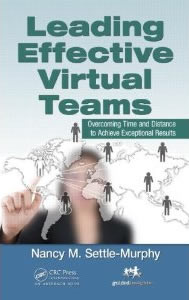- Despite historically proclaiming “unwavering support” for the LGBTQ community, companies are scrubbing all references to DEI, transgender, women, equity and inclusion from their websites.
- Despite lavishing praise in performance reviews, organizations are unceremoniously terminating employees for “poor performance.”
- Despite touting how much they respect their employees, employers are forcing employees back to the office full time against their will.
- Despite claiming to provide a “safe environment where everyone has a chance to thrive,” companies are quietly dropping identity-based employee resource groups and mentoring programs for women and minorities.
Culture = Values + (Actions + Behaviors + Practices)
It’s no wonder that so many employees are left to wonder what’s become of the culture they thought they knew and felt proud of, the culture that drew them to work there in the first place. Have the company values really been cast aside? Are the principles they once upheld suddenly null and void? And if so, is this still a place people want to work for, given a choice?
Culture is all about what we value and how we show it, how we behave and how we connect. To preserve culture, an organization’s core values must remain a guiding light, and not just pretty words that have no real meaning. When an organization’s stated values are at odds with its actual policies and practices, it’s hard to know whether the real indicator of culture is the set of values listed on the company website or annual report, or its actual practices and policies.
In this edition of Communique, I offer some practical (though not necessarily easy!) steps organizations can take to realign stated values with principles, policies and practices. In many cases, existing values and principles will need to be revamped or replaced, and in other cases, current policies and practices will need to be overhauled. And in some cases, values will need to be reaffirmed or amplified.
Tips for Aligning Values and Actions, Principles and Practices
- Invite employees to assess the current relevance and accuracy of your organization’s stated values, given today’s realities. You can do this a number of ways. You might ask people to complete a written assessment and discuss the results in a group setting, focusing on the most glaring gaps. Or set up cross-departmental focus groups moderated by an objective, neutral facilitator. Assuming a high degree of psychological safety within your team, you may want to devote time in your regular meetings for a candid discussion.
- Compare results of your latest employee engagement surveys to your organization’s stated values. For example, if employees give low ratings to the credibility or accuracy of management communications, yet your stated values describe leadership communications as transparent and honest, you have a gap that requires immediate attention. Or if employees value your company’s emphasis on family friendliness and employee wellbeing, and your organization is about to mandate a full-time RTO policy, beware of the gap that’s about to open up.
- Prioritize which gaps need closing immediately. Which ones are causing the most discontent within the company, as evidenced by factors such as attrition, plummeting morale, lack of motivation or lower productivity levels or negative buzz that immobilizes employees? Also pay attention to what outside observers, such as prospective hires, business partners, clients, industry analysts, members and investors, are seeing and hearing. Employees past and present are flocking to social media to expose what they see as hypocrisy and questionable practices by their employers, so disgruntlement is unlikely to stay a secret for long.
- Determine how best to close the gaps. Involve people across the organization in the discussion. Is it time to redefine organizational values, revise, or reassess policies and practices that no longer jibe with your stated values? In some cases, your organization may even need to reassess its entire mission if new ways of doing business stand in stark contrast to your original mission, especially if your organization has had to endure drastic cuts to staff or funding.
- Communicate your (new or revised) values and principles clearly and show how policies and practices support these values. For example, if employee wellbeing is touted as an important value, correlate this to your organization’s medical and mental health benefits, flexible work or family leave policies, PTO, sick time policies, etc. If transparent communications is a stated value, you might tie this to two-way communications channels or skip-level meetings.
- Embed Values in Daily Operations, such as pairing new hires with “culture ambassadors” who exemplify the company’s values. Tell stories that provide compelling, tangible examples of values in action, featuring employees at all levels. Start meetings by reinforcing a core value—e.g., kick off weekly stand-ups by recognizing someone who demonstrated “Customer First” thinking. If “innovation” is a core value, establish a habit of asking, “Are we thinking big enough?” in strategy discussions.
- Validate and revise periodically. Make sure your employees believe that your organization is walking the talk. Include relevant questions in your employee engagement surveys, 1:1s, team meetings, internal focus groups, or cross-departmental meetings. Make it safe for employees and managers alike to be honest about what’s working, what’s not, where stated values are still misaligned, and what changes may need to take place.
Leaders shape culture through their actions, communication, and decision-making. Culture is not about where we work, what we’re working on or what we’re producing. It’s about how we behave, how we’re treated, how we treat others, what we value, and how we demonstrate those values in our everyday work.
Links
Downloadable resources from Guided Insights
- Values in Practice – Assessment and Action Planning Assessment Template – downloadable PDF
- Team communications matrix for hybrid and virtual teams – template
- De-escalation triage model tip sheet to help you recognize, assess and intervene when meetings are in danger of being derailed due to unproductive conversations, regardless of your role.
- To give you and your team a head start on creating draft principles, download this checklist for creating strong principles and meaningful team norms.
My past Communiques




